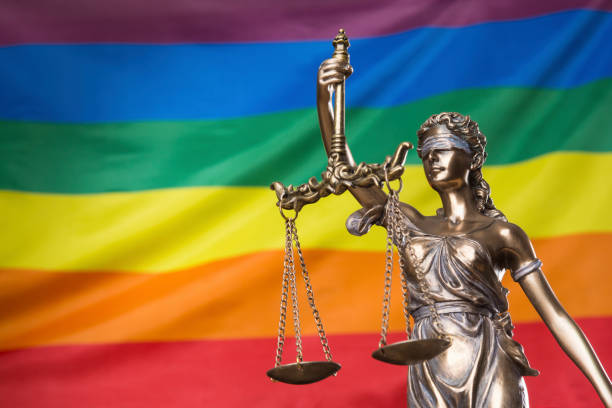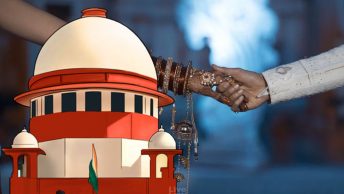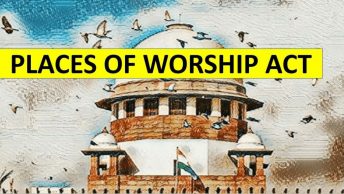The Supreme Court of India is all set to hear a set of petitions concerning the legal recognition of same-sex marriage. The fact that these petitions will be heard by a bench headed by Chief Justice D.Y. Chandrachud, has created both hope and panic in different quarters. A liberal judge when it comes to matters of gender, sexuality, and personal autonomy, the Chief Justice has been part of benches that have upheld the fundamental right to privacy, decriminalized sodomy, decriminalized adultery, delinked women’s right to abortion from marital status, and advocated for a functional definition of the family in the matter of state support for childcare, among others. While this has made those desirous of removing the legal barriers to same-sex marriage hopeful about getting a favorable verdict from the Court, it has led the opponents of such a possibility to panic. Thus, during the Winter session of the Parliament, Bharatiya Janata Party’s Sushil Modi decried “left-liberal activists’” attempt to legalize same-sex marriage via the judiciary, adding that “two judges cannot sit and take a decision on such social issues”. Others enraged by the judges’ involvement in the issue have taken to staging protests in front of the Court and distributing pamphlets against it in the Delhi Metro.
These popular reactions notwithstanding, the question, from a legal-technical point of view, at least, is not whether the Supreme Court should allow LGBTQ citizens to marry or not. Nor is it whether unelected judges should decide the issue instead of the people’s representatives. Where similar situations are treated differently by the law, it is difficult to argue that courts do not have a role in examining the legality of such distinctions. The more relevant question, I argue, is whether the Court can legalize same-sex marriage, given what the current marriage laws state and the scope for creative interpretation that they afford.
Four Legislations and a Wedding?
The multiple petitions in this case invoke four legislations: the Hindu Marriage Act (HMA) under which any two Hindus can get married; the Special Marriage Act (SMA) which allows the marriage of any two individuals irrespective of their religion; the Foreign Marriage Act (FMA) through which Indians can register their marriages solemnized overseas under Indian law; and the Citizenship Act (CA) that confers legal recognition upon the foreigner spouse of an Indian citizen or Overseas Citizen of India (OCI).The common thread uniting all the petitions is the belief-presumption assertion that it is possible to read the statutes in ways that can accommodate same-sex marriage. All the petitioners, including the ones that ask for the offending provisions to be struck down as their primary prayer, urge the Court to adopt such favourable readings of the statutes. I show below that this belief-presumption assertion can be sustained only in the case of the CA, but not the other statutes.
The Limits of Interpretation
Let us begin with the SMA. The petitions challenging the SMA essentially argue that since the Act provides for civil marriage and is meant to safeguard the common aspirations of citizens rather than religious groups, it could be interpreted in progressive ways without disturbing any other marriage statue or group interests.[1] Contrary to this belief, however, the SMA by its very text and structure implicates Hindu law. Section 21 of the SMA provides that two persons marrying under the Act are to be governed by the Indian Succession Act in matters of succession. But Section 21A, which was inserted in 1976 to prevent Hindu men from losing their birth interest in coparcenary property upon entering a civil marriage, provides that if the said two persons are Hindus (including Buddhists, Sikhs and Jains), they will continue to be governed by Hindu law even after their marriage under the SMA.
How does this section pose a problem for what the petitioners are arguing? Suppose the SMA is interpreted to recognize same-sex marriage, as the petitioners have asked, allowing two Hindu men, Prince and Lucky, to have a valid civil marriage. But by virtue of Section 21A, both of them will continue to be governed by the Hindu Succession Act (HSA). Let us say, Lucky dies, without making a will. As per the HSA, his self-acquired property as well as his interest in a coparcenary will now devolve upon his heirs [Sections 6(3) and 8 read with the Schedule]. But for a Hindu male, the HSA recognizes only his “widow” i.e., his female spouse, to be an heir, consistent with the definition of a valid marriage under the HMA, which means that despite being married to Lucky, Prince will not be treated as a spouse for the purpose of succession. Thus, the difficulty with recognizing same-sex marriage under the SMA is that it will make Section 21A of the Act inoperative – something which even the most liberal theories of statutory interpretation do not allow. The only way out of this problem is if same-sex marriage is also recognized under the HMA, which is the subject matter of another set of petitions. Let us turn to those petitions and their arguments.
The HMA petitions argue that since the Act allows marriage “between any two Hindus”, the sex of the parties is irrelevant and should be so declared by the Court in order to allow same-sex Hindu marriages.[2] Indeed, the HMA does not use gendered terms to refer to the parties to a marriage. Section 5 opens with the words: “A marriage may be solemnized between any two Hindus…”. At two places [Sections 5(iii) and 7(2)] the Act uses the terms “bride” and “bridegroom”, and in the rest of the Act, it uses gender-neutral terms like “party” and “person”. The terms “bride” and “bridegroom”, which are commonly used to denote the female and male parties to a marriage, might pose a problem, but we have a way to get around it. Literary scholar Ruth Vanita has argued that these terms must be understood as signifying two different gender-roles that the parties choose for themselves in their relationship and/or wedding rather than references to the biological sexes of the parties. Vanita cites examples of weddings of lesbian couples, where one woman performed the bridegroom through clothes and conduct, and the other, the bride.
But even by adopting a creative reading of the statute such as Vanita’s, we run into difficulty when we consider the principle of statutory interpretation, that a statute must be read as a whole to determine the meaning of its individual clauses. The HMA may not use sex-specific terms for the parties to a marriage, but the terms that it uses to denote the wider kin network of which they are a part, are all sex-specific kinship terminology. Thus, in laying down the prohibited relationships, Section 3(g) uses the following terms: father/mother; brother/sister; grandmother/grandfather; uncle/aunt; niece/nephew. For Vanita’s argument to hold, we must show that these kinship terms are independent of sex. In other words, we must be able to show that the term “uncle” essentially denotes a role performance and so does “aunt”.
But then one is saved the trouble by a close reading of Section 3(g) itself. The section states that “…two persons are said to be within the degrees of prohibited relationship … (iii) if one was the wife of the brother … of the other”. Here the persons occupying the terms “wife” and “brother” must be female and male respectively and not otherwise, for that would change the meaning of what the HMA intends. Note, that there is no clause stating that a relationship is prohibited if one party was the husband of the sister of the other party. What the HMA intends is to prohibit a Hindu female from marrying her husband’s brother i.e., her brother-in-law.[3] But there is no prohibition on a Hindu male marrying his wife’s sister i.e., his sister-in-law [Think how the traditional family readily agrees to Rajesh marrying Nisha after Pooja’s death in Hum Aapke Hain Koun? (1994)]. In other words, what the Act allows or does not allow a person to do, is specific to the sex of the person. Thus, for the HMA to have a coherent, consistent meaning as a whole, the terms “bride” and “bridegroom” can only be given their commonly accepted meanings as the female and male parties to a marriage, respectively.
Next, the FMA. Here, the petitioners argue that since Section 17(1) of the FMA allows the registration of marriages involving an Indian citizen solemnized under foreign law, there should be no difficulty in registering such same-sex marriages which are valid elsewhere. What the argument ignores is the next clause – Section 17(2) – which provides that no such marriage can be registered which does not satisfy the conditions laid down in Section 4 of the Act.[4] But Section 4 uses sex-specific terms like “bride” and “bridegroom”, which then effectively blocks the possibility of registering same-sex foreign marriages under Section 17(1).
And finally, the CA. The petition urges that since the only requirement for the issuance of an OCI card to the foreign spouse of an OCI card holder under Section 7A(1)(d) of the Act, is that their marriage should have been registered and had been subsisting for at least two years, the government must be directed to apply the provision irrespective of the sex of the spouse if these requirements are met. This is the only instance in this case where the statue uses a sex-neutral term – “spouse” – and the conditions – registration and duration of marriage – are not tied to another provision in the statue or another statute with more restrictive conditions. Consequently, here is a genuine possibility for the Court to decide in favour of the petitioners.
Conclusion
To summarise then, the chances of reading down the statutes to accommodate same-sex marriage within the current law seem slim. This leaves the option of striking them down for being discriminatory as some of the petitioners have asked, but here the Court has a record of being deferential to the legislature. The Court has either dodged questions of discrimination by holding personal law to be outside the scope of fundamental rights review or has carved out narrow exceptions to a discriminatory law which has ultimately preserved the discrimination in both essence and effect. Admittedly, the Court signalled a new direction in the triple talaq judgment where the majority held only uncodified personal law to be immune from fundamental rights review. It would be interesting therefore to see how the judges respond to the questions raised by the marriage petitions. The case is likely to have important implications not only for LGBTQ rights but also for family law reform.
[1]Nikesh PP v. Union of India, WP(C) 2186/2020, Kerala High Court; Dr. Kavita Arora v. Union of India, WP(C) 7692/2020, Delhi High Court; Udit Sood v Union of India, WP(C) 2574/2021, Delhi High Court; Supriyo @ Supriya Chakraborty &Anr. v. Union of India, WP (C) 1011/2022, Supreme Court of India.
[2]Abhijit Iyer Mitra v. Union of India, WP (C) 6371/2020, Delhi High Court; Sameer Samudra &Anr. v. Union of India, WP (C) 1105/2022, Supreme Court of India.
[3]Exceptions to this rule are validated through customs [Section 5(iv), HMA] as in the case of karewa marriages among the Jats, in whicha woman marries the brother of her deceased husband [Think Ek Chadar Maili Si (1986)].
[4]Vaibhav Jain v Union of India, WP(C) 7657/2020, Delhi High Court; Sameer Samudra &Anr. v. Union of India, WP (C) 1105/2022, Supreme Court of India.
[Ed Note: This article has been written by Saptarshi Mandal, an associate professor at the Jindal Global Law School. The article has been edited & coordinated by Archita Satish and published by Avani Vijay from our Student Editorial Team.







[…] Posted bySaptarshi Mandal […]
It should be made valid and legal as well. There shall be no restriction on freedom of choice unnecessarily.
For the reason that the admin of this site is working, no uncertainty very quickly it will be renowned, due to its quality contents.
Download 1WIN APK today and win big in sports betting, live casino, and crash games like Aviator.
Get the latest Aviator game review and tips
Tested aviator game review on low-end devices
Try your luck at BitStarz, grab your crypto welcome pack: $500 + 180 FS, awarded Best Casino multiple times. Find the latest mirror to play safely.
Players love Lucky Jet and dominate the game.